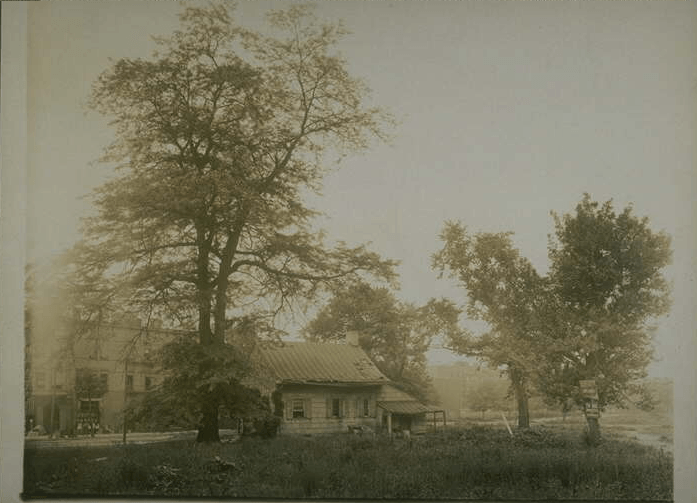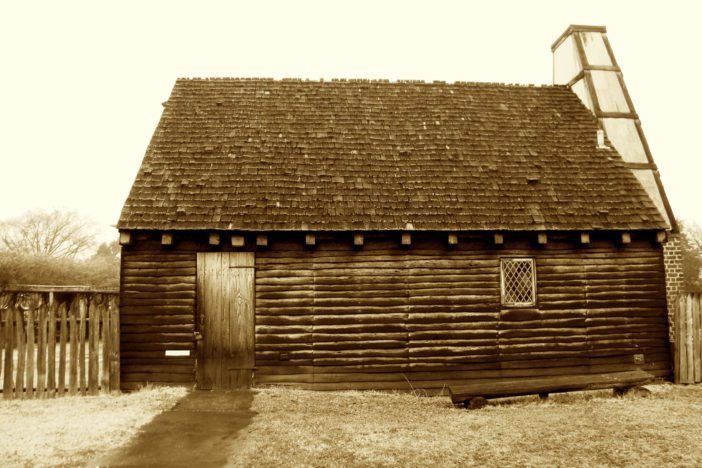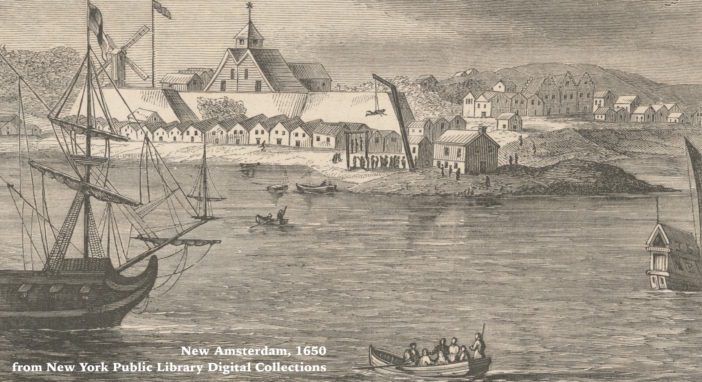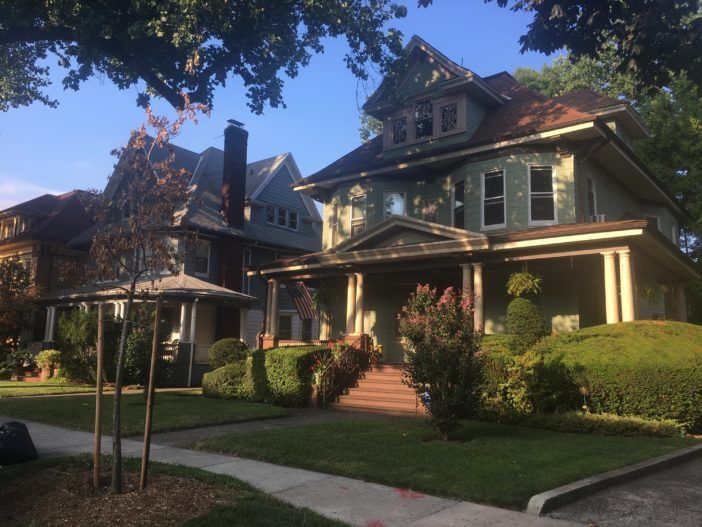A Fantastical Stroll Through Ditmas Park With Namesake Jan Jansz van Ditmarsen

You wait for him at the corner of Cortelyou and 16th Street— a timeless, local rendezvous spot to meet anyone. But this isn’t just anyone. You’re waiting for Jan Jansz van Ditmarsen, the namesake of Ditmas Park.
You don’t know much about him, except that when developer Lewis H. Pounds developed this land in 1902, he chose the name “Ditmas Park” to pay homage to Ditmarsen and his progeny, who had owned the land since the mid-17th Century.
Suddenly, he greets you, and before you can even take note of his colonial-era clothes or his shorter-than-average stature, he pulls you along westbound on Cortelyou Road. This is a man, after all, who is used to being busy: by the time he was thirty years old he had acquired 4 oxen, 4 horses, 13 cows and 60 acres. In just eight years, he would double his acreage and number of cows.

You wonder if the modern world you’re walking through is frightening to him, but he just laughs — somewhat derisively — and tells you that he learned to embrace the excitement of the unknown from his father, Jan Jansz van Ditmarsen Sr., who sought out a better life in an uncertain world when he came here, to New Amsterdam, with his wife Aeltje, in the late 1630s. Before then, Jan and Aeltje lived in Amsterdam. Jan Sr. was originally born in the Dithmarschen region of what is present-day Germany. That is, of course, the source of the family name: Jan Jansz van Ditmarsen.
Because of his father’s journey, Jan, has great admiration for the diversity of immigrants and children of immigrants that live and run businesses along Cortelyou in today’s Ditmas Park. Passing cleaners and coffee shops, Jan points out that one of the ways his father made a life for himself in the new world was as a shoemaker.
But, Jan says, he did not grow up in the neighborhood — he was born in Dutch Kills (present-day Long Island City) where his father owned land, in (roughly) 1643.

Passing local bars further down Cortelyou, Jan reminisces about the tavern he once kept in Midwout (the Dutch town that would eventually become Flatbush) and how his establishment was just as much a community center and meeting hall as it was a place to have a drink.
Jan notes that in his day, beer was much safer to drink than local water. You point out that the public water is now a source of pride for most New Yorkers. Jan lets out a dismissive laugh and claps you a little too hard on the back.
You are learning that, in addition to his energy and gregarious persona, Jan is also quite brusque with others. Likely it is heredity. Jan’s mother, Aeltje, was without question a fighter — twice she sued people in New Amsterdam for slander, once because she heard that the local schoolmaster called her a “whore.”
Jan himself was once called before the town justices for actions during his two-year tenure as Midwout constable and was given a 100 £ bail for acting “contemptuously” towards the justices. Jan admits he can be short with others and doesn’t take kindly to criticism. He’s not a perfect man. He did own some slaves, after al l— common for landowners in the New World at that time.
Making your way along Ditmas Avenue now, Jan admires the beautiful Victorian mansions that house so many families, in 2016.

He maintains a stiff upper lip as he tells you about how he and his wife Ariantje had to bury their four, very young children. Four. You quickly realize that daily life in Midwout in Jan’s time was an extraordinary struggle. Truly, only the strong survived.
Jan is quick to change topics and pridefully tells you about how his son Douwe (who would live well into old age) had acquired land in Jamaica, following in the footsteps of his father, and his father’s father. Eventually, Douwe’s son, Johannes Ditmas, would also take over the Ditmarsen land in Midwout-Flatbush. You start to understand how this family was able to hold onto this land for the next two centuries.
You’ve made your way up to Newkirk Plaza and Jan can’t help but marvel at what has become of his once bucolic farmland — trains rumbling below, brick apartment buildings pushing towards the sky, busy people hustling to make a life for themselves. He thinks it’s marvelous. For a moment you consider asking him about the broken laws of space-time that allowed today’s stroll to occur, but think better of it.

He bids you farewell and tells you it was an honor to get to know today’s Ditmas Park. It’s certainly a long way from where his family’s story began in the flat, marshy lands of Dithmarschen some four hundred years ago. As he strolls off, you can’t help but admire his hustle, his gumption, and his hearty resolve in the face of tragedy.
Without Jan Jansz van Ditmarsen, and others like him, the Brooklyn you know and love might not be here today.




